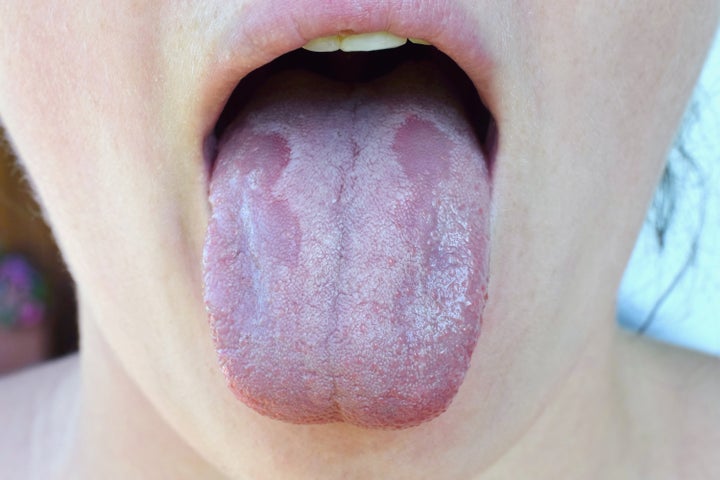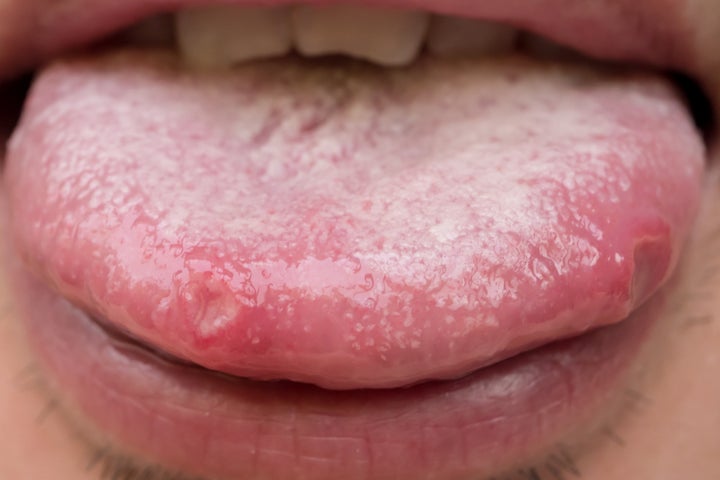
When was the last time you had a good ol’ gawp at your tongue? If you can’t remember, that’s as good a sign as any that it’s time to do it – now.
“I always like to use the phrase ‘the mouth is the mirror to the body’,” says oral and maxillofacial surgeon Peter Dyer, the British Dental Association’s chair of hospital dentists. Simply put, your tongue can flag underlying factors about your health. Who knew?
With oral cancers on the rise – the rate of people being diagnosed with tongue, tonsil and oropharyngeal cancers has increased by almost 60% in the last decade – Dyer is urging people to be “tongue aware”.
“Know what a healthy tongue looks like,” he says. Next time you visit your dentist, ask them to hold a mirror up and stick your tongue out – look at the surface and under surface, move your tongue left and right to see the sides.
A healthy tongue, says Dyer, is “nice and pink with a slightly rough surface”. If you notice swellings at the back of your tongue, don’t worry – these are your tastebuds.
Changes can happen to the tongue which may be a sign of a health issue. While Dyer doesn’t want to scare anyone, he does want people to be aware of symptoms that may need further exploration.
Below are some of the most common changes that may happen to your tongue – and what they signify. But if you have any concerns – don’t self-diagnose. The NHS says a pharmacist can look at your tongue and might be able to tell you: what’s causing it; if you can buy anything to help with any pain or irritation; or if you should see a dentist or GP.
White or yellow coating across the tongue
The most common issue is when people develop a “white coating” across their whole tongue, says Dyer, caused by a build-up of cells on the surface. This could be because of irritation or food debris. In babies, it can be due to suckling – a build-up of milk.
People might also experience a build-up of yellow coating on the surface of the tongue, which often occurs for the same reason, but the yellow colouring can be caused by smoking (nicotine stains), or drinking tea or coffee.
These are oral hygiene issues, rather than health issues, says Dyer, so they don’t require treatment. If you have a white coating, give your tongue a scrub every time you clean your teeth. And if it’s yellow, quitting smoking could keep it at bay.
You might also find it useful to invest in a tongue scraper – both Dyer and Dr Nigel Carter, CEO of the Oral Health Foundation, recommend their use. “Bacteria that cause bad breath live on the back of the tongue, so by tongue-scraping you can [also] scrape those bacteria off and stop some of the bad breath,” adds Dr Carter.

White patches on the tongue
White patches across the tongue and elsewhere in the mouth can indicate thrush, caused by an organism called candida. This is usually an indication that a person is run down, says Dyer. It could also occur in those who have been taking antibiotics, or using asthma inhalers. If left untreated, the infection can spread to other parts of the body, states the NHS.
Anti-thrush medication can be used to treat this, prescribed by your dentist or GP. “Oral thrush is usually harmless,” states the NHS. ”[It] can be easily treated with a mouth gel [and] treatment usually lasts at least seven days.” For a natural remedy, Dyer recommends natural yoghurt.
“If you get isolated [single] white patches, it can be a bit more worrying,” explains Dyer – especially if you have a normal, healthy pink tongue.
It’s not always serious – it could be down to the fact the tongue is rubbing against a tooth or filling – but there’s also a chance it could indicate oral cancer. A localised white patch or red patch which has been there for more than two to three weeks should be checked out by your dentist or GP.
Ulcers on the tongue
Ulcers on the tongue are less common than general mouth ulcers, which occur on the inside of cheeks or other soft tissues in the mouth. They’re usually a result of trauma to the tongue – for example, if you accidentally bite it. There’s not really a treatment option, it should clear up in a week or two, but if you want to help it along, Dyer recommends a DIY mouth rinse with hot water and salt.
Some teens and young adults are prone to getting crops of ulcers on the tongue, four or five at a time, which last about five days. These can be very painful. “Some patients can suffer a lot from these, so I’d recommend going to the dentist when you’ve got the ulcers,” Dyer says. It’s likely your dentist will prescribe a topical steroid gel, cream or mouth rinse.
Any ulcers that stick around for two to three weeks should definitely be looked at by a professional – either a dentist or GP. Mouth cancers are one of the few cancers increasing in number, says Dr Carter, partly down to HPV-related cancers. In November, the Oral Health Foundation revealed that new cases of mouth cancer had increased for the 10th year in a row.
Symptoms of tongue cancer can include a patch, spot or lump on the underside of your tongue – or top of it – which doesn’t go away. Key risk factors are smoking, drinking a lot of alcohol, and infection with HPV. People with tongue cancer might also experience pain when swallowing, numbness in the mouth that doesn’t go away, or unexplained bleeding from the tongue.

Lumps and localised swelling on the tongue
If you’ve got a localised swelling on your tongue, opposed to the whole thing swelling up, it could be because you’ve bitten it accidentally. The swelling should settle after 48 hours – and there’s not much you can do about it, other than wait it out.
People who have a lumpy swelling that’s pink in colour might have a polyp (tissue growth), which is usually “not nasty in anyway” and can be cut off by dentists, says Dyer.
Others might develop a wart on the tongue, which is caused by HPV, often as a result of unsafe oral sex. It can also happen if you touch a wart with your hand and then put your hand in your mouth. Dyer says any localised swelling that’s been there more than three weeks should be looked at by your dentist or GP.
The whole tongue is swollen
If your whole tongue is swollen, that’s slightly more unusual, suggests Dyer. It might signal an allergy, but it could also be caused by certain types of medication – for example, blood pressure drugs.
If the tongue is very red and swollen, or there are patches of red, it could be a sign that you have a vitamin B12 deficiency or anaemia (from lack of iron). Dentists call it ‘beefy tongue’. For either of these issues, you should speak to your GP or call NHS 111.
In general, if you’re concerned about any changes to your tongue, speak to your pharmacist, dentist or GP. You can also visit NHS Choices for more information on causes of a white or sore tongue.